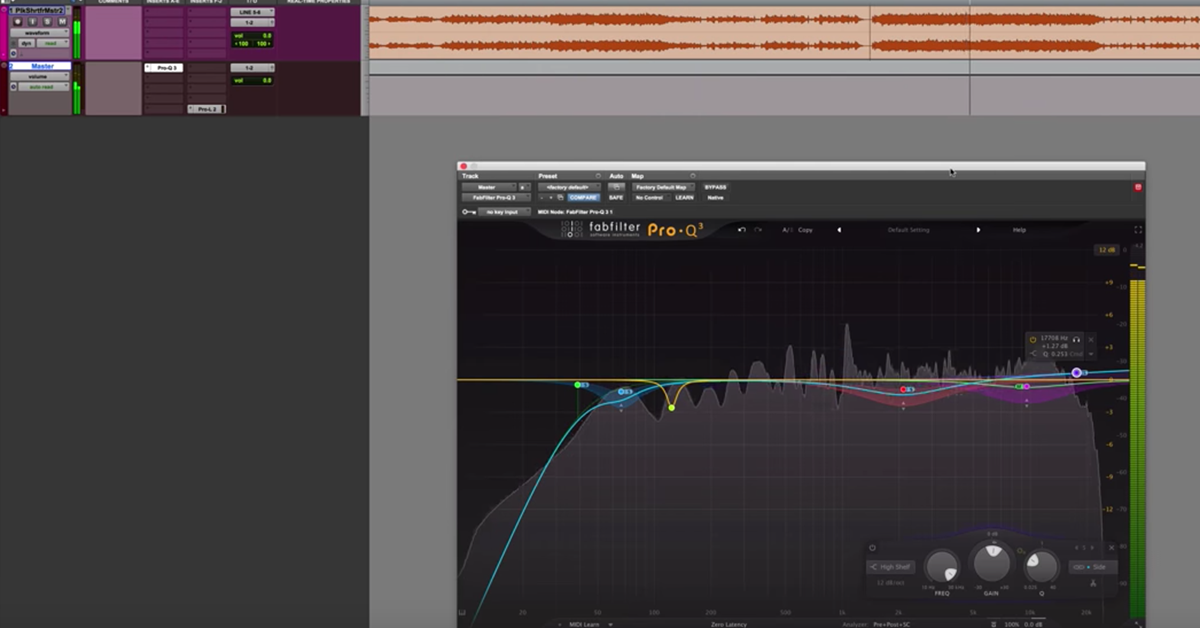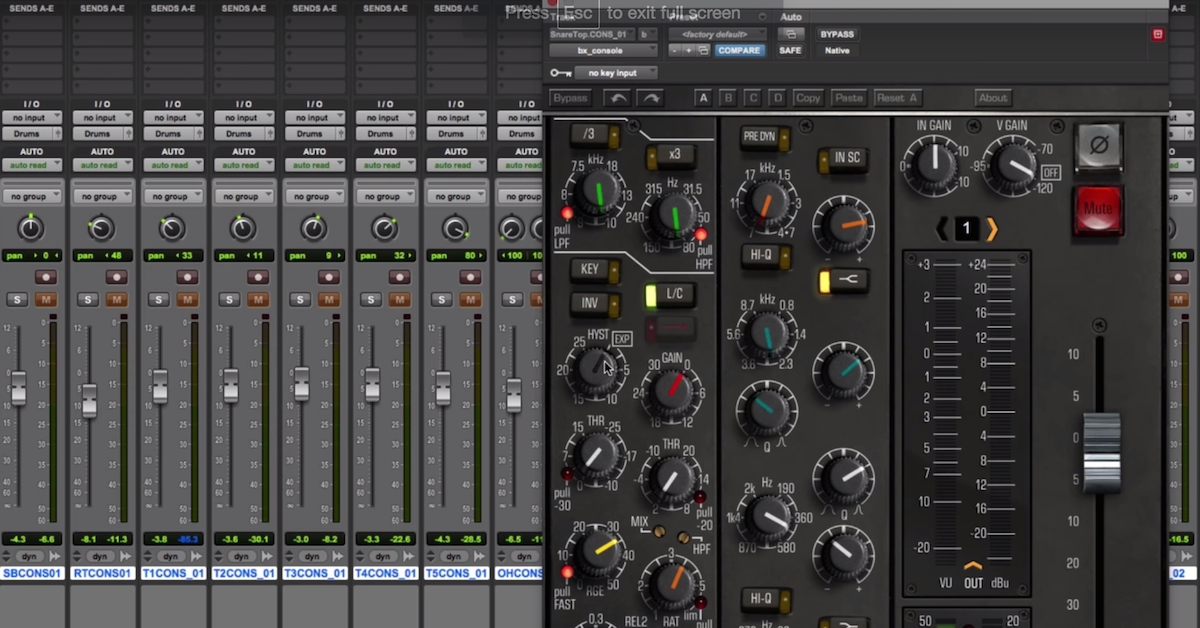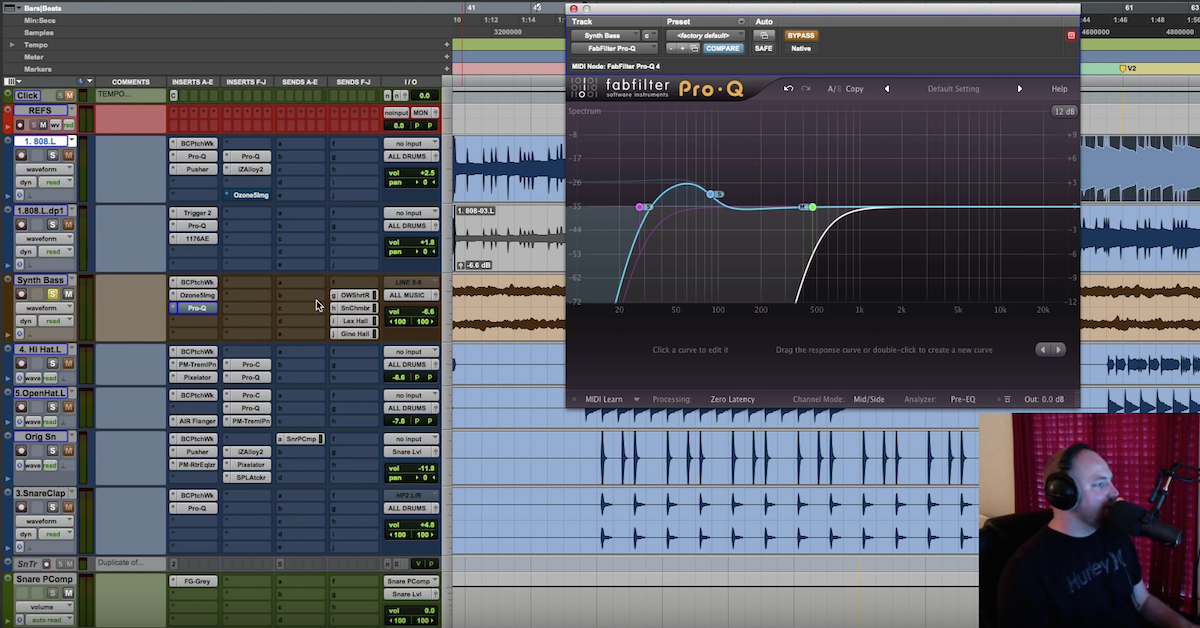5 Favorite FabFilter Plugins (+ Mix Tips)
Article Content
In 2009, FabFilter released their Pro-Q equalizer plugin. Little did they know that it would go on to become one of the most popular plugins of all time.
Their following releases all followed suit. It was great plugin after great plugin, all going on to achieve “best in class” and taking the world of mixing by storm. Today, FabFilter plugins are a staple of top producers in top studios all over the world.
On that note, let’s take a look at 5 FabFilter plugins which every engineer should own:
1. FabFilter Pro-Q 3 Equalizer
The fact that I’ve been a Pro-Q user since version 1 and am still using the same EQ today says a lot.
With each new version, Pro-Q has only improved further, culminating in Pro-Q 3: the ultimate equalization toolbox with everything you could ever need to sculpt and shape your audio to perfection.
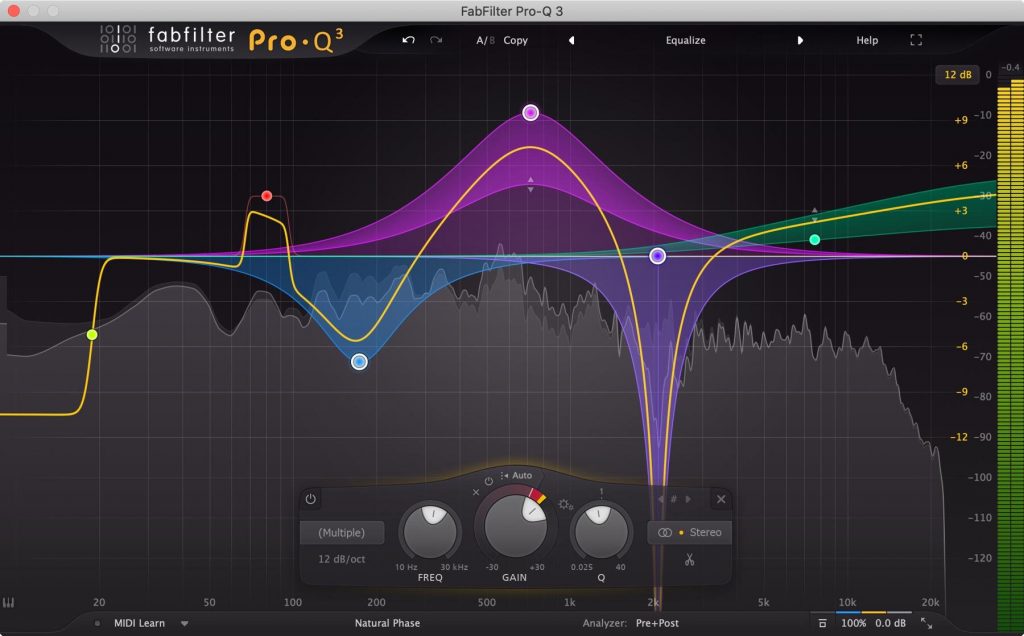
This plugin has a built-in pre/post EQ spectrum analyzer, the highest quality filters, per-band mid-side and L/R processing, EQ matching, per-band dynamic EQ functionality, individual band soloing, automatic gain compensation, sidechain input, a polarity switch and multiple phase and latency modes… Pro-Q 3 has it all!
My Top-Tips for Using the FabFilter Pro-Q 3 Plugin
Mid-Side Mixing
If you haven’t yet delved into the world of mid-side, Pro-Q is a great place to start! Sometimes stereo sound sources can benefit from having their low end collapsed to mono or their high end widened. Being able to adjust mid/side and left/right on a per-band basis within Pro-Q makes these tasks a total breeze!
Visual Mixing?
While relying on “mixing with your eyes” is never really a great idea, Pro-Q’s built in spectrum analyzer can really help speed up the task of locating problem frequencies and eliminating them. Being able to adjust the response speed and detail of the spectrum analyzer to best suit your CPU usage needs is a great added bonus!
Low-Latency vs. Natural Phase
For most mixing tasks, the “low-latency” mode in Pro-Q will work just fine, allowing you to make fast, accurate EQ decisions with no discernible delay/lag between the moves you’re making and what you’re hearing, or any unpleasant phase-shift characteristics that sound weird.
For mastering or equalization of multiple sound sources simultaneously via groups/busses, using the “natural phase” or “linear phase” modes can help preserve the phase integrity of your mix.
2. FabFilter Pro-MB Multi-Band Compressor
As I’ve mentioned in several of my articles, videos and courses in the past, Pro-MB may just be the most powerful audio processing plugin of all time.
It’s not just a multi-band compressor. It’s a multi-band EQ, gate, expander, limiter, compressor, spectrum analyzer, mid-side processor and side-chaining powerhouse all-in-one!
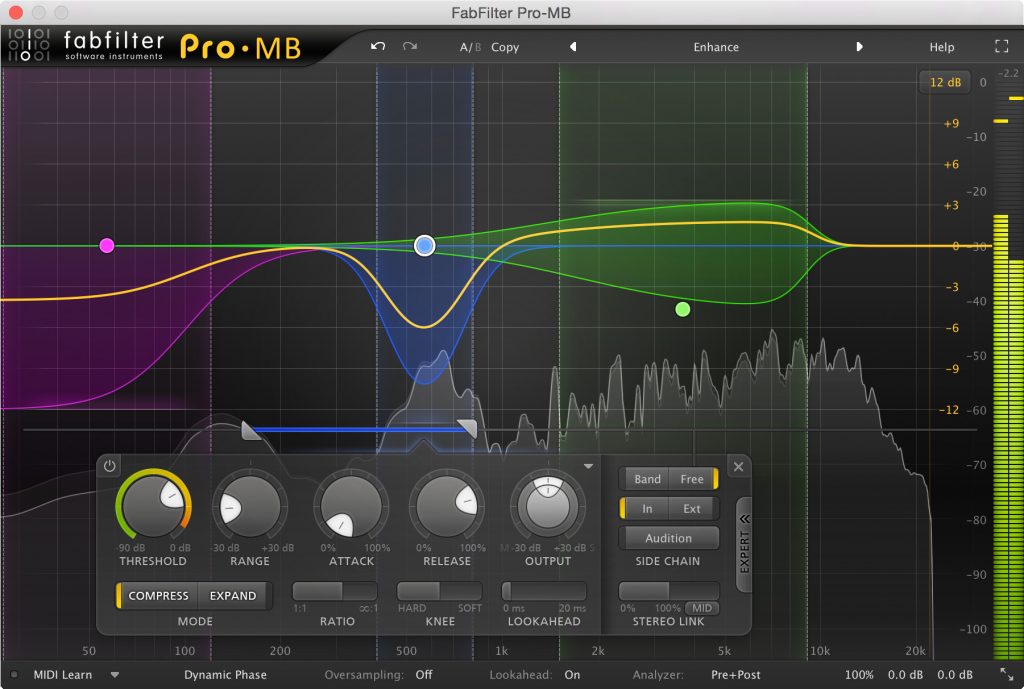
Whether it’s sidechain-compressing the low end of a bass every time the kick hits, dynamically reducing cymbal bleed in close drum mics without ruining your transients, or applying a dynamic high end boost to your vocals to prevent them from ever sounding harsh, Pro-MB has you covered!
Check out the video below, in which I share some of my favorite Pro-MB mixing tricks:
My Top Tips for Using the FabFilter Pro-MB Plugin
Sidechaining Is “the Key.” (Get It?)
The ability to sidechain each individual band in Pro-MB both externally and internally allows for infinite mixing solutions to problems which otherwise seem impossible to solve through conventional means.
Dynamically boosting kick low end in a stereo drum loop without affecting everything else? Check. Reducing harsh sibilance in a vocal without affecting high end clarity? Done. The possibilities are endless!
Regular Compression
While Pro-MB is marketed as a “multi-band compressor,” it can just as easily be used as a great full-range compressor or gate if you simply use it with a single, full-spectrum band. If you don’t own any great compressor or gate plugins already, Pro-MB has you covered as a great all-in-one, cost-effective solution for all your mixing needs!
3. FabFilter Pro-G Gate
Gates are often seen as the “less interesting” mixing tool, often upstaged by EQ and compression.
While classic, old-fashioned gating is definitely a pretty straight forward and “obvious” task, Pro-G takes the process to a whole new level, allowing for far superior customization and damage control and thus resulting in a far superior sonic outcome.
While with a typical gate you’re somewhat limited in how far you can push the bleed reduction process due to the inevitable attack & release time artifacts, the additions of controls such as “hold,” “lookahead” and an extremely customizable sidechaining section in Pro-G allow for much more transparent, musical gating and expansion results when pushed to the limits.
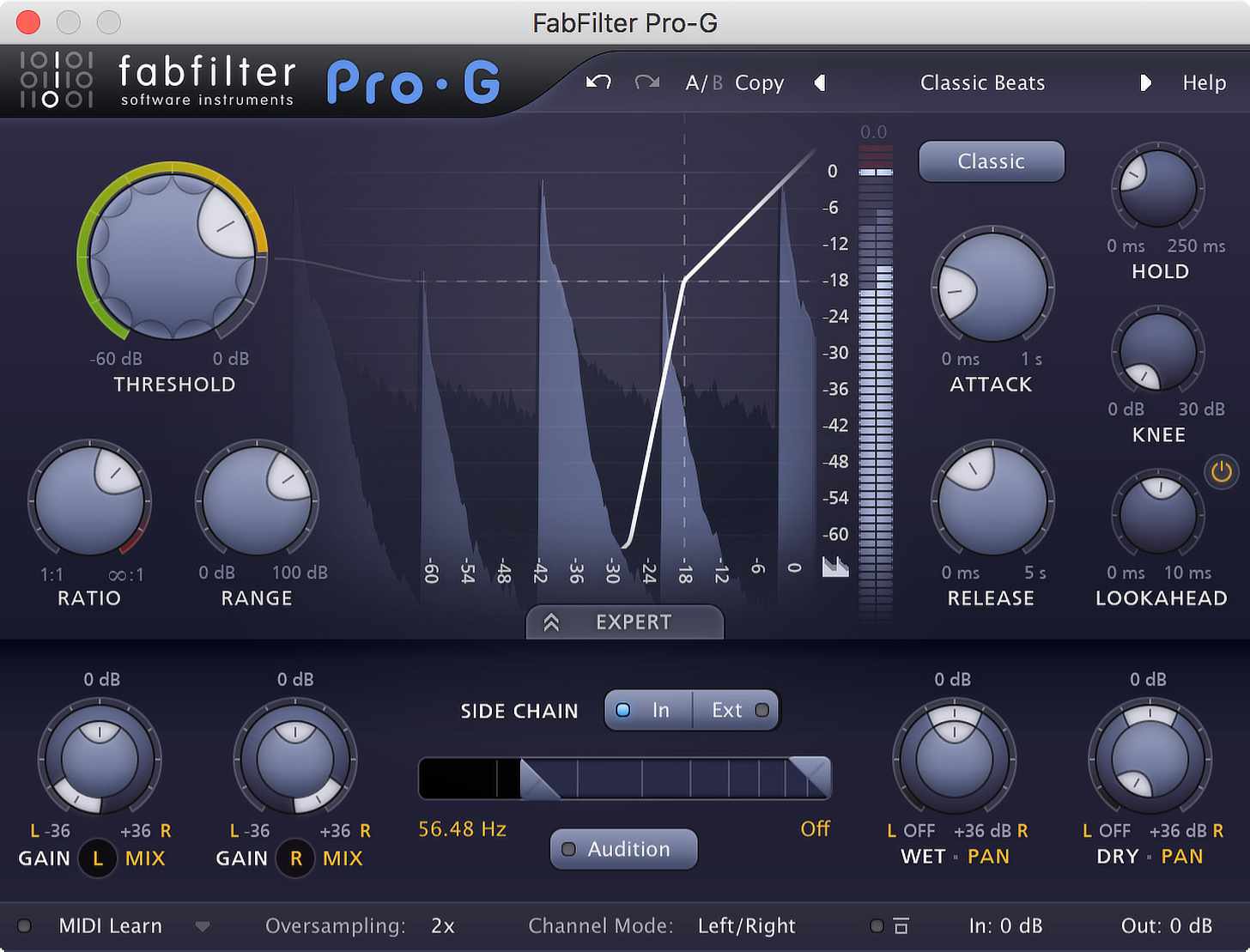
My Top-Tips for Using the FabFilter Pro-G Plugin
Filter the Sidechain
When gating a kick or snare, try using the filters built into the sidechain section to hone in on the fundamental of the particular instrument you want to trigger the gate. This way, you can prevent your snare from triggering your Kick gate and vice versa, leading to much more accurate results.
Dial in Some Lookahead
With a typical gate, even the fastest attack times have the tendency to chop off some of your initial drum transient. Through the use of the “lookahead” control on Pro-G, you can tell the gate to “look ahead” in time and open up a few milliseconds before your drum would typically open the gate, allowing the full transient to pass through unaffected.
4. FabFilter Pro-DS De-Esser
De-essing can be a crucial part of the vocal mixing process, and a cause for a lot of grief for many an audio newcomer.
Pro-DS eliminates all of the guesswork from the process, allowing you to visually pinpoint the most problematic range of sibilant frequencies in a matter of seconds and transparently address the problem with a great set of intuitive controls.
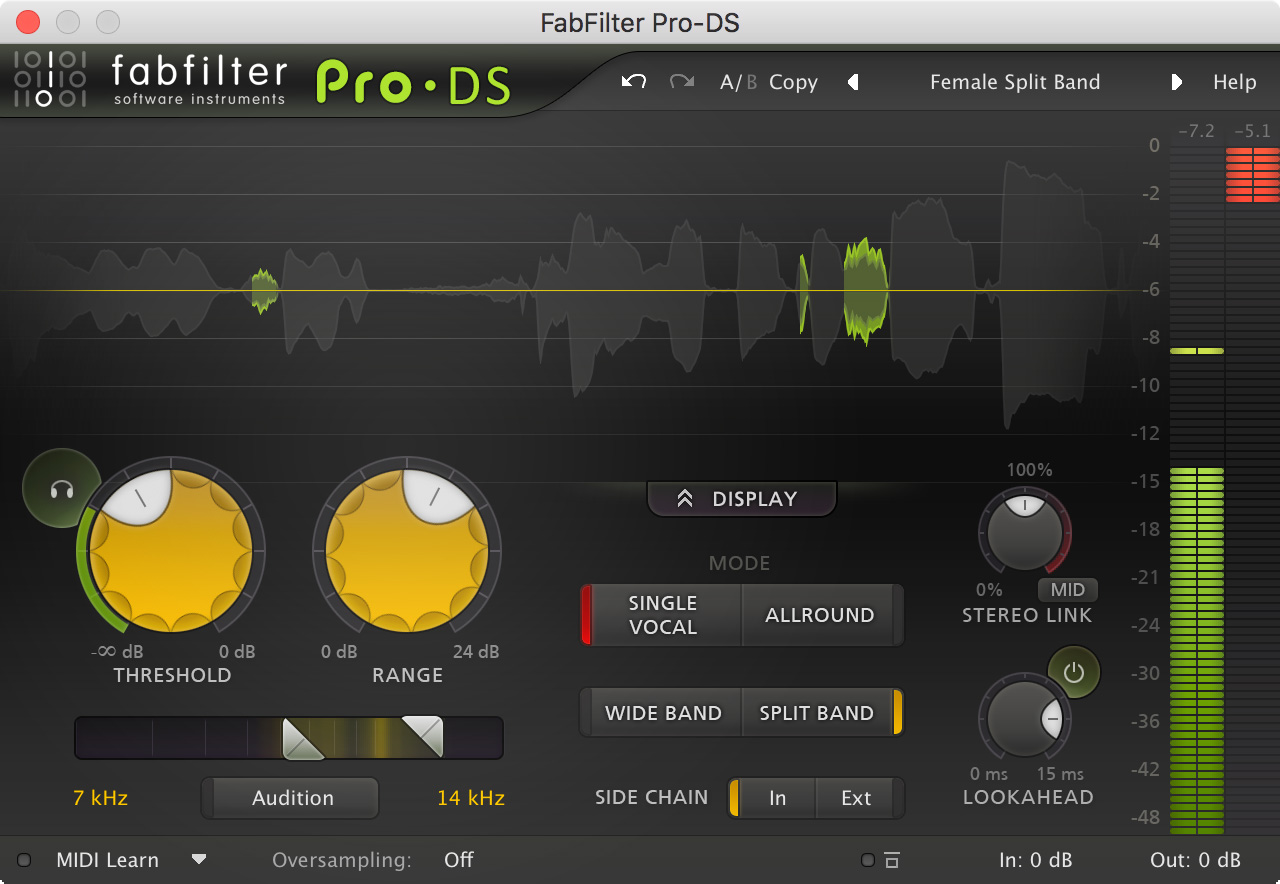
Simply adjust the built-in filters to fit the sibilance characteristics of the particular vocal you’re working on, set the range control to determine the maximum amount of reduction that can occur, and pull down the threshold dial to where you’re getting the desired amount of sibilance control.
Check out the video below for a full overview of the incredible processing capabilities of Pro-DS:
My Top-Tips for Using the FabFilter Pro-DS Plugin
Wide or Split?
De-essing typically comes in two variants: wide-band and split-band. Simply put, in wide-band mode Pro-DS will turn down the entirety of an “s” sound. In split-band mode, it will only reduce the range of harshness determined via the built-in filters. Personally I tend to use two de-essers while mixing a vocal. The first is at the start of my chain in “wide” mode — it reduces the overall sibilance from the get-go transparently as if it had been recorded that way to begin with. I place the other at the end of my chain in “split” mode to counteract the sibilant harshness which can occur after heavily EQ’ing and compressing a vocal.
5. FabFilter Pro-L 2 Limiter
Being the last plugin in your mastering chain which the entirety of your mix is going to be processed through, it’s incredibly important that the limiter plugin you’re using is up to the task of getting the job done in the most clean and transparent way possible.
Enter Pro-L 2.
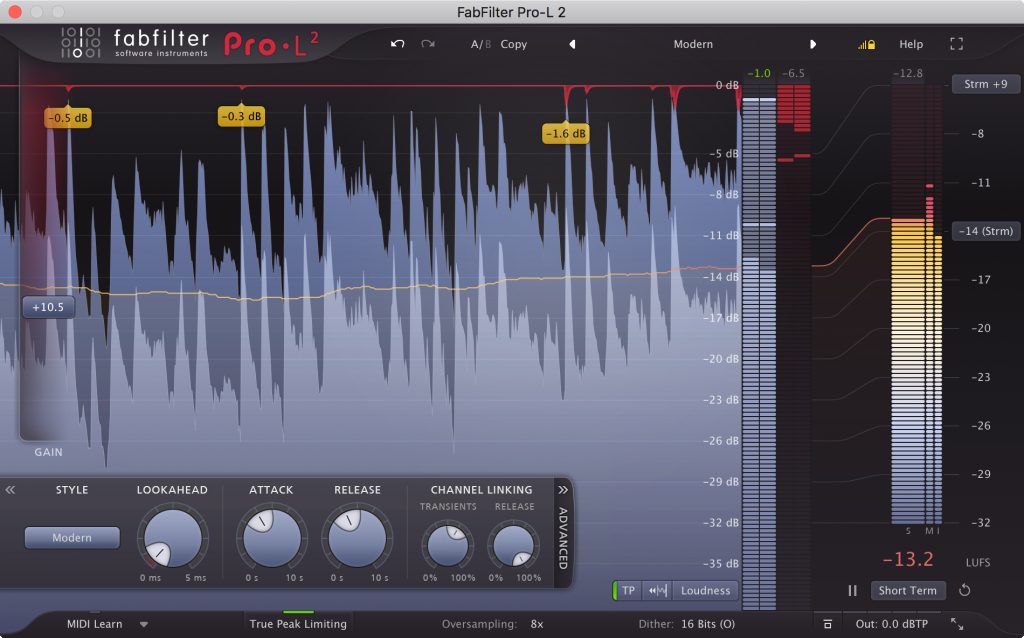
Much like their other plugins, upon its release FabFilter’s Pro-L quickly became the go-to mix buss limiter for mastering engineers all over the globe due to its clean, punchy and transparent sound — even when pushed hard.
While limiter usage tends to be fairly self explanatory (boost gain, make mix louder), Pro-L 2 allows you to drastically alter the characteristics of the maximization process with the various “styles” of limiting available.
My Top-Tips for Using the FabFilter Pro-L 2 Plugin
Matched Comparisons
When determining how much limiting to apply to a mix or instrument, hold down the “shift” key in order to simultaneously reduce the output gain by the same amount and conduct fair listening comparisons at the same apparent volume.
Final Conclusion
FabFilter is one of the few companies who truly pushes the envelope when it comes to audio plugin design, and they deserve every ounce of success and acclaim they’ve garnered over the years.
I highly recommend also checking out their other plugins, as they’re all equally great to the ones mentioned in this article.





